33+ Pestle Analysis Examples to Download
In the ever-evolving landscape of business, staying ahead of the curve requires a keen understanding of both internal and external factors that can influence an organization’s success. This is where tools like Pestle Analysis come into play. By examining the Political, Economic, Social, Technological, Legal, and Environmental dimensions, businesses can gain valuable insights to make informed decisions and shape effective strategies. In this article, we’ll delve into the world of Pestle Analysis, exploring its definition, step-by-step implementation, and real-world examples that highlight its significance in strategic planning.
1. Simple PESTEL Analysis Example
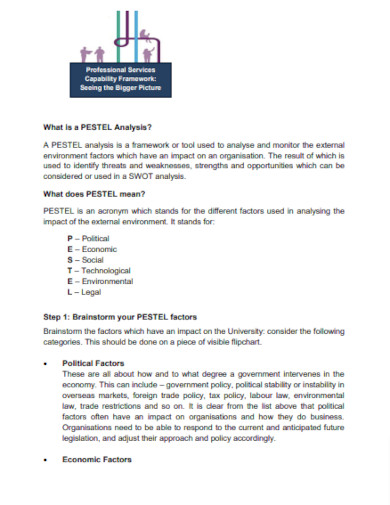
blogs.shu.ac.u
2. PESTLE Analysis Overview Example
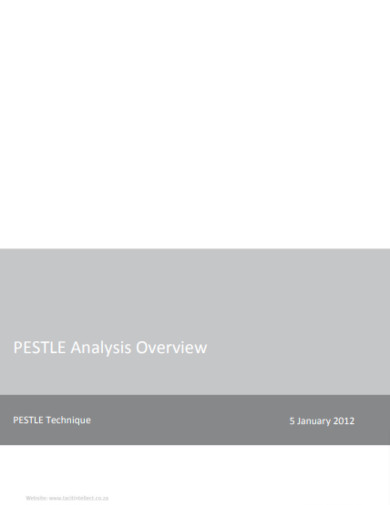
tacitintellect.co.za
3. PESTLE analysis Risk management
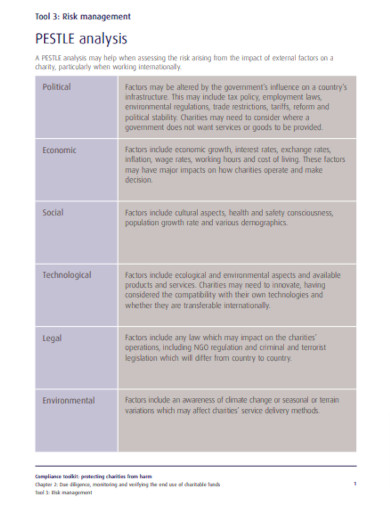
assets.publishing.service.gov.uk
4. PESTLE Analysis Template Example
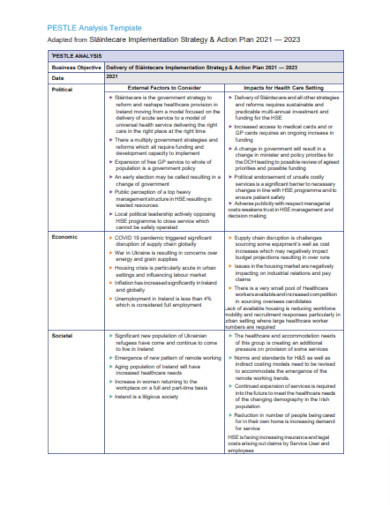
hse.ie
5. PESTEL Analysis for Small Businesses

nit-edu.org
6. PESTEL Analysis Strategy Skills
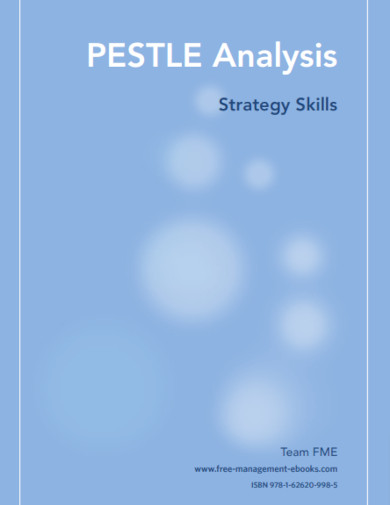
dl.icdst.org
7. Sample PESTLE Analysis Example
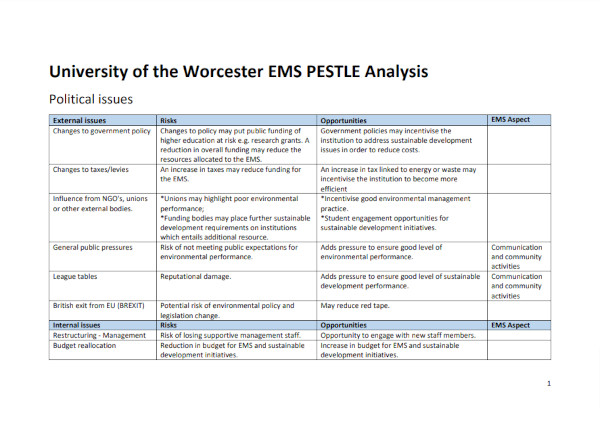
worcester.ac.uk
8. Research for PESTLE Analysis
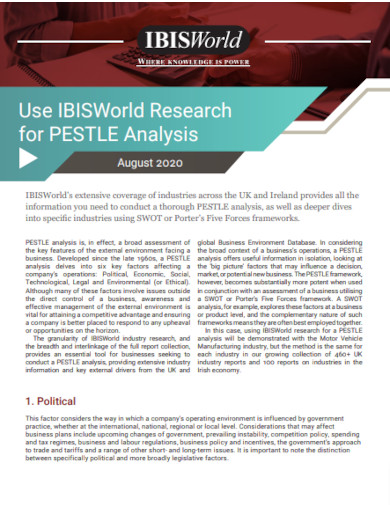
runi.ac.il
9. PESTLE Analysis Results Example
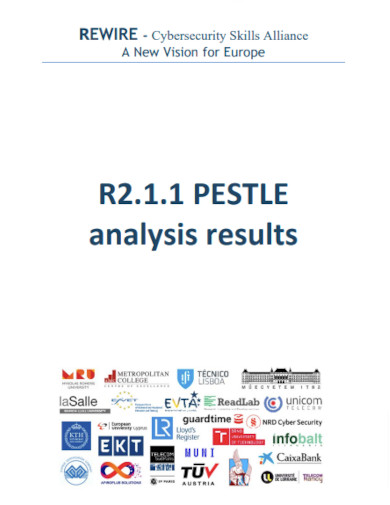
rewireproject.eu
10. Basic PESTLE Technique Example
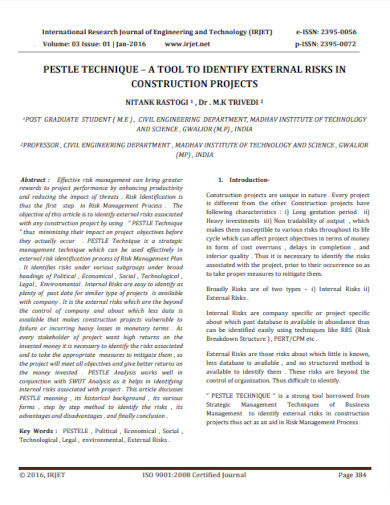
irjet.net
11. Editable PESTEL Analysis Example
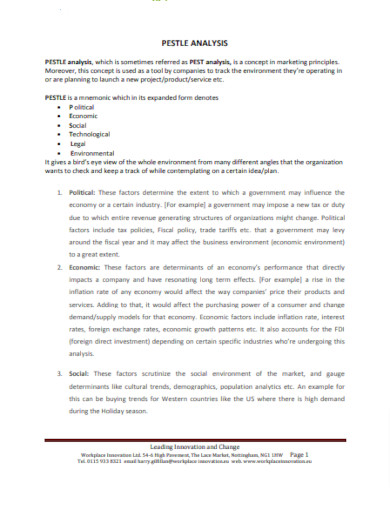
static.igem.org
12. Printable PESTEL Analysis Example

dspace.wunu.edu.ua
13. Use of PESTEL Analysis Tool of Quality Management
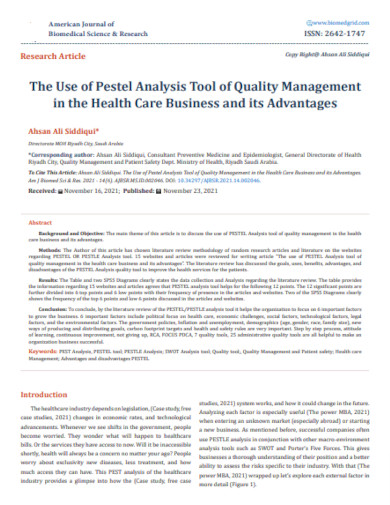
biomedgrid.com
14. Understanding the Marketing and Management of trails using PESTEL Analysis
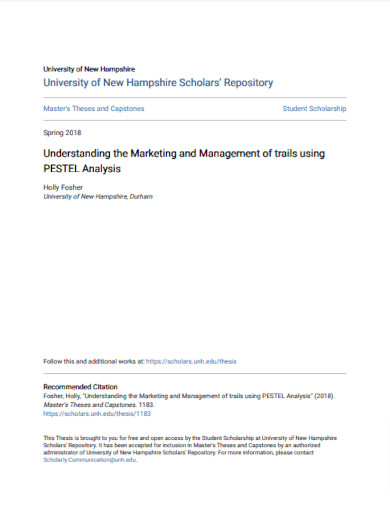
scholars.unh.edu
15. Standard PESTLE Analysis Example
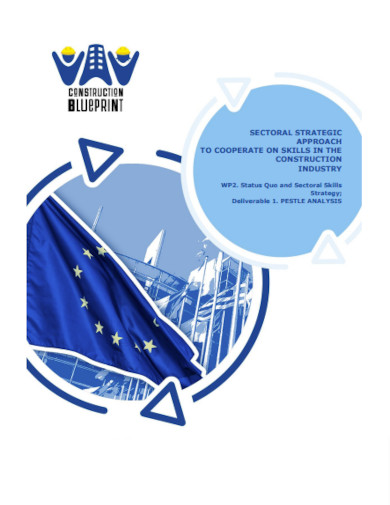
constructionblueprint.eu
16. In Depth PESTLE Insights Example
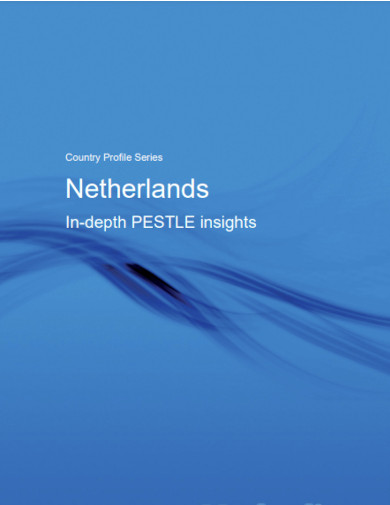
marketline.com
17. PESTEL Analysis of the Macro Environment
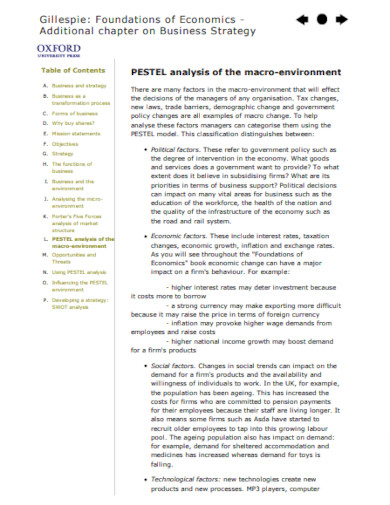
castore.ca
18. Competitive Intelligence Algorithm for PESTLE Analysis
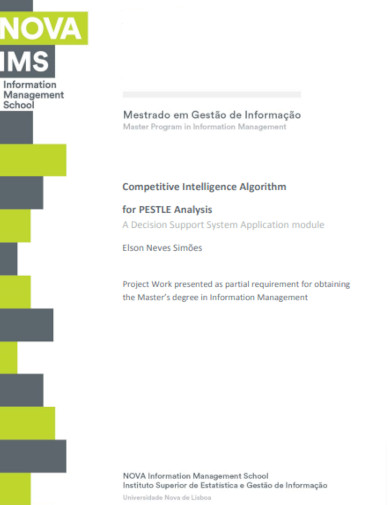
run.unl.pt
19. Modern Pestle Analysis Example

wellington-school.co.uk
20. Carrying out a PEST Analysis Example
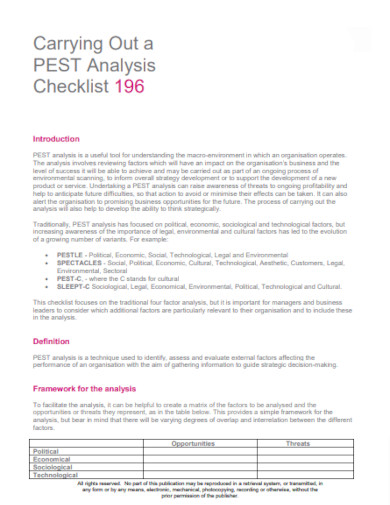
managers.org.uk
21. Market and PESTLE Analysis Example

turnkey-retrofit.eu
22. Basic Market and PESTLE Analysis Example
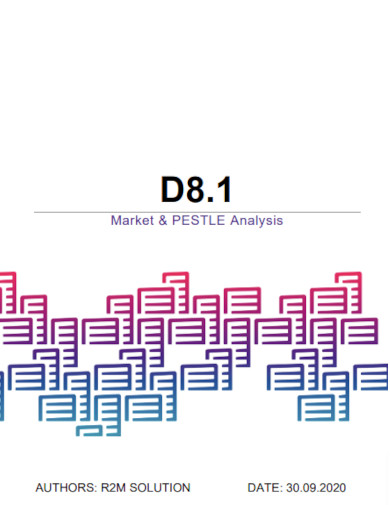
wedistrict.eu
23. Creative PESTLE Analysis Example
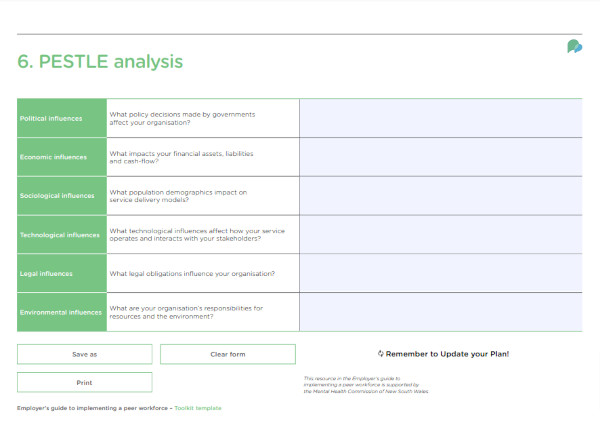
nswmentalhealthcommission.com.au
24. PESTLE Analysis of Solar Home Systems
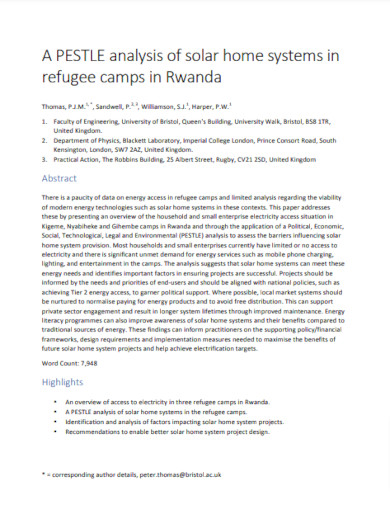
spiral.imperial.ac.uk
25. PESTLE Analysis Tool Example
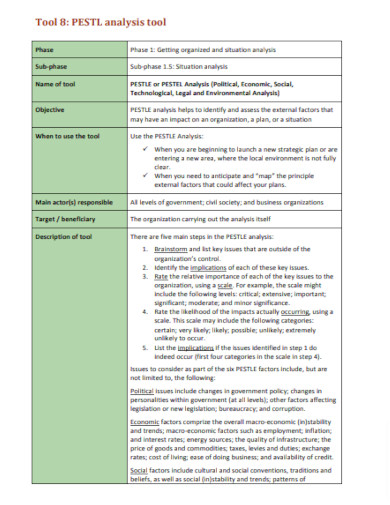
city-development.org
26. PESTEL Analysis of External Environment
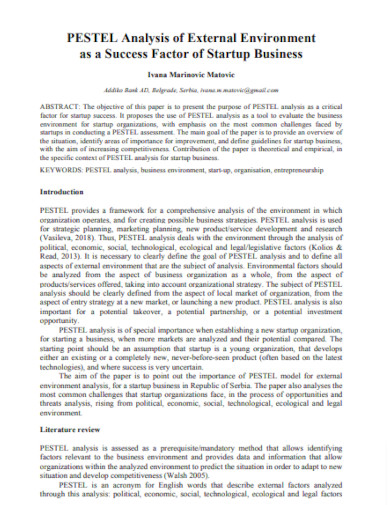
society.education
27. PESTLE Analysis of Indonesian Family Planning Board
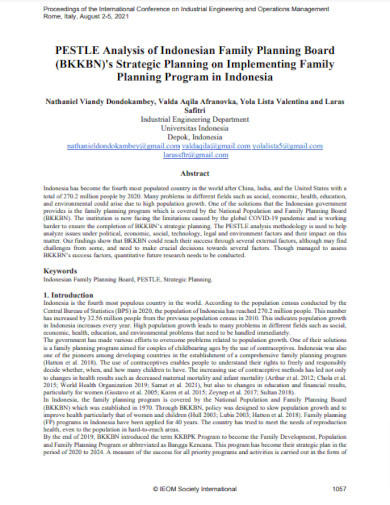
ieomsociety.org
28. PESTEL Analysis for the Islamic State of Iran

diglib.tugraz.at
29. PESTEL Analysis of the EU Context

energyprospects.eu
30. Example PESTEL Analysis
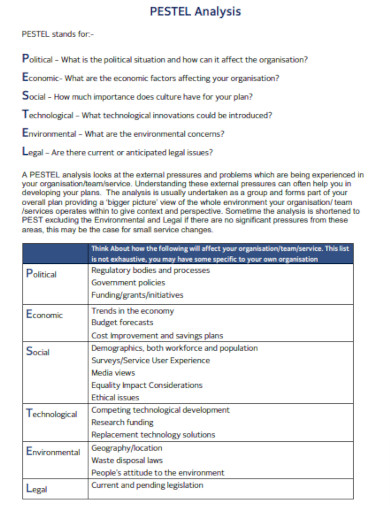
heiw.nhs.wales
31. Pestle Analysis A Study of the Banking Industry
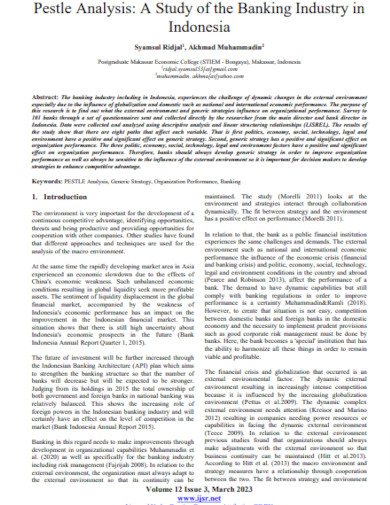
ijsr.net
32. PESTLE ANALYSIS of Barriers to Community Energy Development
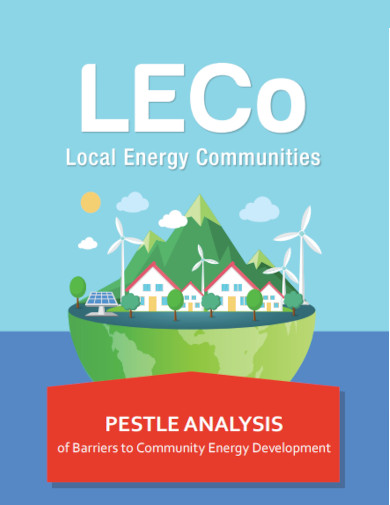
leco.interreg-npa.eu
33. PEST Analysis Template Example
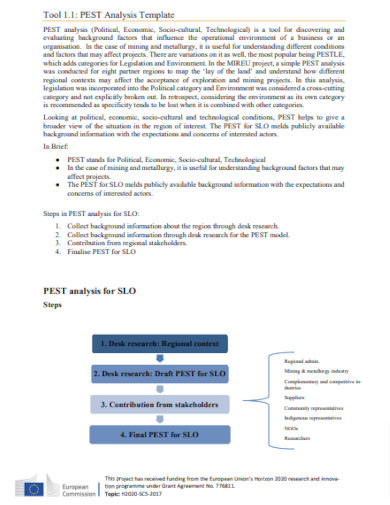
mireu.eu
34. Draft PESTLE Analysis Example
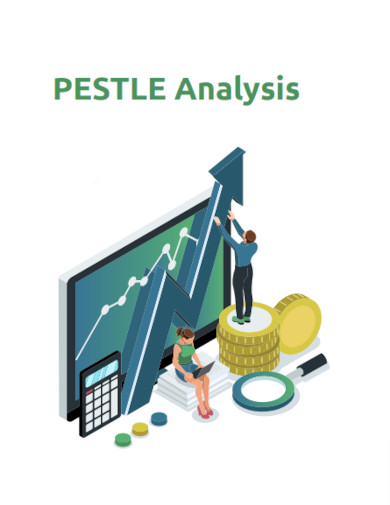
connectassist.co.uk
What is PESTLE Analysis?
Pestle Analysis is a strategic framework that assists businesses in comprehensively evaluating the external factors that can impact their operations and success. Each letter in the acronym corresponds to a specific dimension:
Political: Considers government policies, regulations, stability, and potential political influences on the industry.
Economic: Examines economic indicators, market trends, inflation, and other economic factors.
Social: Focuses on cultural trends, demographics, social attitudes, and consumer behavior.
Technological: Analyzes technological advancements, innovation, and their potential effects on the business.
Legal: Takes into account laws, regulations, and legal issues that may affect the industry.
Environmental: Considers ecological and environmental factors, including sustainability and climate change.
How to do a PESTLE Analysis
Here’s a concise guide to conducting a Pestle Analysis for your business, ensuring a thorough assessment of external factors and a solid foundation for strategic decision-making:
Step 1: Define the Objective and Context
Begin by defining the objective of your Pestle Analysis. Are you looking to launch a new product, enter a new market, or navigate changes in the industry? Understanding the context of your analysis is crucial for tailoring your approach.
Step 2: Identify Relevant Factors
For each dimension of Pestle, identify the factors that are most relevant to your objective. This requires a keen observation of both current and potential future influences.
Step 3: Evaluate Impact and Significance
Assess the impact and significance of each identified factor on your business. Determine whether it is a potential strength, weakness, opportunity, or threat.
Step 4: Develop Strategies
Based on your evaluation, brainstorm and develop strategies to leverage strengths, mitigate weaknesses, capitalize on opportunities, and counteract threats. These strategies will guide your decision-making and help you achieve your goals.
FAQs
How does Pestle Analysis differ from SWOT Analysis?
While both Pestle Analysis and SWOT Analysis are strategic tools, Pestle focuses on external factors exclusively, while SWOT considers both internal (Strengths and Weaknesses) and external (Opportunities and Threats) factors.
Can Pestle Analysis predict future developments accurately?
Pestle Analysis doesn’t predict future developments with certainty; rather, it provides insights into potential influences. The future is subject to change due to various unpredictable factors.
Is Pestle Analysis applicable only to businesses?
No, Pestle Analysis can be applied to various contexts beyond business, such as political campaigns, healthcare, and non-profit organizations, to understand external influences.
In the realm of strategic planning, the Pestle Analysis stands as a potent tool for understanding the complex web of external factors that can shape an organization’s journey. By diligently examining the political, economic, social, technological, legal, and environmental dimensions, businesses can equip themselves with the insights needed to make well-informed decisions, adapt to changes, and proactively pursue their long-term goals. As the world continues to evolve, Pestle Analysis remains an invaluable companion in navigating the ever-changing landscape of opportunities and challenges.

